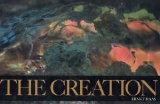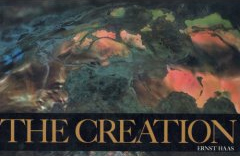
Ernst Haas
Encyclopedia

Austria
Austria , officially the Republic of Austria , is a landlocked country of roughly 8.4 million people in Central Europe. It is bordered by the Czech Republic and Germany to the north, Slovakia and Hungary to the east, Slovenia and Italy to the south, and Switzerland and Liechtenstein to the...
n artist and influential photographer noted for his innovations in color photography
Color photography
Color photography is photography that uses media capable of representing colors, which are traditionally produced chemically during the photographic processing phase...
, experiments in abstract light and form, and as a member of the Magnum Photos
Magnum Photos
Magnum Photos is an international photographic cooperative owned by its photographer-members, with offices located in New York, Paris, London and Tokyo...
agency.
Photography career
Haas attended medical school in Austria, but, in 1947, left to become a staff photographer for the magazine HeuteHeute
heute is a news show on the German television channel ZDF. The main show is broadcast at 7 PM, or 19:00, consisting of news of the day, weather forecasts and sport...
. His photo essay for the magazine on prisoners of war coming home to Vienna won him acclaim and an offer to join Magnum Photos from Robert Capa
Robert Capa
Robert Capa was a Hungarian combat photographer and photojournalist who covered five different wars: the Spanish Civil War, the Second Sino-Japanese War, World War II across Europe, the 1948 Arab-Israeli War, and the First Indochina War...
. Haas and Werner Bischof
Werner Bischof
Werner Bischof was a Swiss photographer and photojournalist.-Early life:Bischof was born in Zürich, Switzerland. When he was six years old, the family moved to Waldshut, Germany, where he subsequently went to school...
were the first photographers invited to join Magnum by the founders Capa, David "Chim" Seymour
David Seymour
Chim was the pseudonym of David Seymour , a Polish photographer and photojournalist. Born Dawid Szymin in Warsaw to Polish Jewish parents, he became interested in photography while studying in Paris...
, Henri Cartier-Bresson
Henri Cartier-Bresson
Henri Cartier-Bresson was a French photographer considered to be the father of modern photojournalism. He was an early adopter of 35 mm format, and the master of candid photography...
, George Rodger
George Rodger
George Rodger was a British photojournalist noted for his work in Africa and for taking the first photographs of the death camps at Bergen-Belsen at the end of the Second World War....
and Bill Vandivert.
Haas moved to New York City and in 1953 produced a 24-page, color photo essay on the city for Life
Life (magazine)
Life generally refers to three American magazines:*A humor and general interest magazine published from 1883 to 1936. Time founder Henry Luce bought the magazine in 1936 solely so that he could acquire the rights to its name....
, which then commissioned similar photo spreads on Paris
Paris
Paris is the capital and largest city in France, situated on the river Seine, in northern France, at the heart of the Île-de-France region...
and Venice
Venice
Venice is a city in northern Italy which is renowned for the beauty of its setting, its architecture and its artworks. It is the capital of the Veneto region...
. By 1958 he was considered one of the top ten photographers in world by Popular Photography magazine. In 1962, the Museum of Modern Art
Museum of Modern Art
The Museum of Modern Art is an art museum in Midtown Manhattan in New York City, on 53rd Street, between Fifth and Sixth Avenues. It has been important in developing and collecting modernist art, and is often identified as the most influential museum of modern art in the world...
mounted a one-man show of Haas' color photos. Haas' first photo book, Elements, was published the next year.
Some of Haas' most famous pictures were deliberately out-of-focus and blurred, creating strong visual effects. He used the dye transfer process to make many of his original prints, yielding richly saturated colors.
In 1964, film director John Huston
John Huston
John Marcellus Huston was an American film director, screenwriter and actor. He wrote most of the 37 feature films he directed, many of which are today considered classics: The Maltese Falcon , The Treasure of the Sierra Madre , Key Largo , The Asphalt Jungle , The African Queen , Moulin Rouge...
hired Haas to direct the creation sequence for Huston's 1964 film, The Bible
The Bible: In The Beginning
The Bible: In the Beginning is a 1966 Biblical epic film recounting the first 22 chapters of the Book of Genesis. It was a joint American/Italian production conceived by Dino De Laurentiis and directed by John Huston. The music score is by Toshirô Mayuzumi. The production was photographed by...
. Haas continued working on the theme, producing the photo book, The Creation in 1971. Other photography books by Haas included In America in 1975, a tribute to his adopted country for its bicentennial year; Deutschland in 1977; and Himalayan Pilgrimage in 1978. Other films that Haas worked on included The Misfits
The Misfits (film)
The Misfits is a 1961 American drama film written by Arthur Miller, directed by John Huston, and starring Clark Gable, Marilyn Monroe, Montgomery Clift, Thelma Ritter, and Eli Wallach. It was the final film appearance for both Gable and Monroe...
in 1961, Hello, Dolly! in 1969, Little Big Man
Little Big Man
Little Big Man is a 1970 American Western film directed by Arthur Penn and based on the 1964 comic novel by Thomas Berger. It is a picaresque comedy about a Caucasian boy raised by the Cheyenne nation during the 19th century...
in 1970, and Heaven's Gate
Heaven's Gate (film)
Heaven's Gate is a 1980 American epic Western film based on the Johnson County War, a dispute between land barons and European immigrants in Wyoming in the 1890s...
in 1980. Haas also photographed a number of advertising campaigns for Marlboro cigarettes.
In 1986, Haas received the Hasselblad Award
Hasselblad Award
The Hasselblad Foundation International Award in Photography is an award granted to "a photographer recognized for major achievements".The award – and the foundation – was set up from the estate of Erna and Victor Hasselblad...
for his photography. Haas died of a stroke in New York City
New York City
New York is the most populous city in the United States and the center of the New York Metropolitan Area, one of the most populous metropolitan areas in the world. New York exerts a significant impact upon global commerce, finance, media, art, fashion, research, technology, education, and...
.
While Haas had been working for some time before his death on a book with 'ideas for chapters and picture layouts', it fell to his son and daugher and former colleagues to bring a book to realisation. In 1989 'A Colour Retrospective 1952-1986' was published by Thames and Hudson. In it 'Selected Writings of Ernst Haas' gives broad and profound insight into his approach to and philosophy of photography;
'Photography is a bridge between science and art.It brings to Science what it needs most, the artistic sense, and to art the proof that nothing can be imagined which cannot be matched in the counterpoints of nature'.

